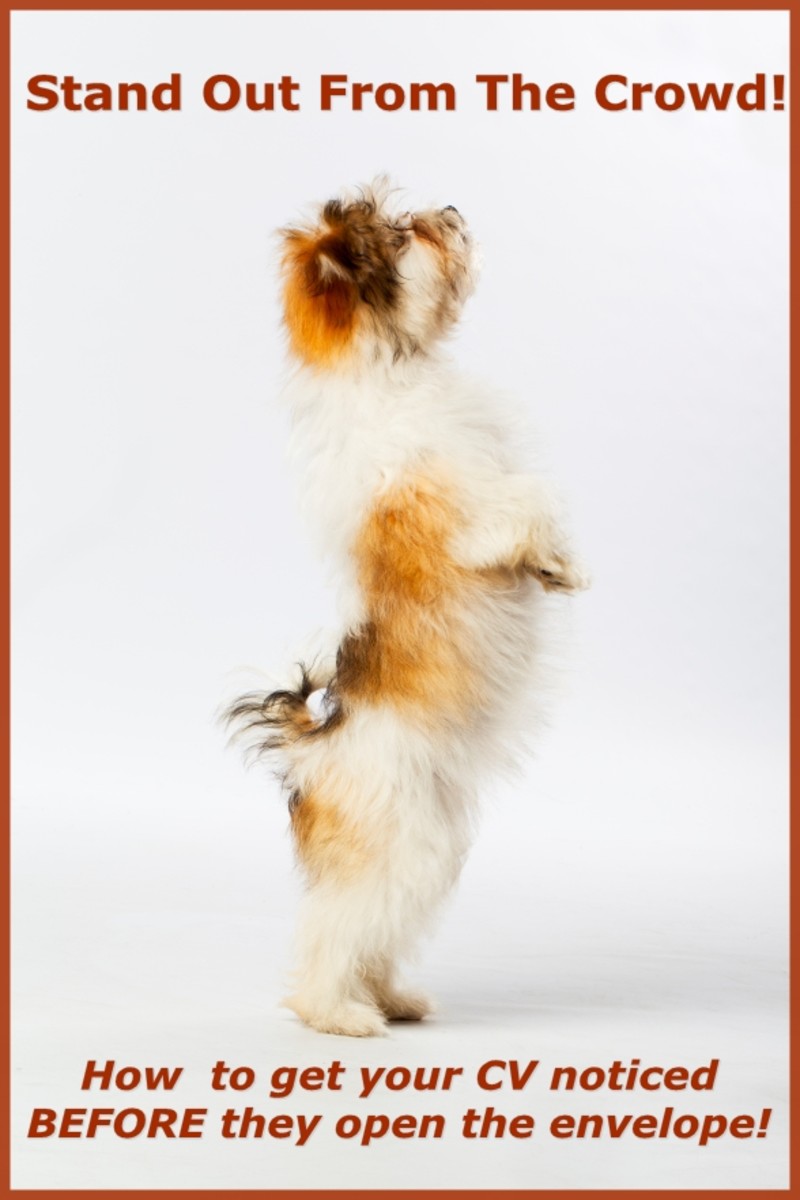Creating an Effective Resume

Attract Employers With These Simple Steps
If you've been in the job market for awhile, you know how frustrating it is to secure gainful employment. In today's economy, there is no shortage of qualified and over-qualified individuals, vying for top jobs. In this climate it becomes more important than ever to capture the attention of potential employers, but there are definite dos and don'ts with regard to effective job seeking. I recall reading an article in which a publisher admitted to receiving countless queries on scented and/ or colorful stationery, in glitter stuffed envelopes, accompanied by small gifts. While undoubtedly noticeable, those gimmicks were ultimately not effective because they lacked maturity and professionalism. As long as we're on this subject, let's examine a few other "don'ts" before we hit the list of "dos."
- Recruiting and Retaining a Dynamic Workforce
Looking to create a stronger work ethic in your employees? Do you have employees that are falling short of their obvious potential? Maybe the answer to solving this dilemma lies in what you as a supervisor or business owner can do to improve the work
1. Do not apply in person. If you do apply in person, it should consist of dropping off your professional resume or CV in a sealed envelope, addressed to the proper person, and nothing more. NEVER expect to receive an on-the-spot interview.
2. Always dress professionally when dropping off a resume, or for a scheduled interview, even if the position for which you've applied is relatively casual. Your appearance makes as much of an impression as what you've included on your resume.
3. Never apply for the same position more than once. It will make you appear disorganized, forgetful or just plain annoying. If they are interested in your application, they will call.
4. Do not call to check on the status of your resume. Employers hate that. If they do not call, they are probably not planning to interview you. Most employers do not send regrets, so it is possible that 7 or 8 times out of 10, you will never hear from an employer after your resume has been sent.
5. Do not put all your eggs in one basket. Sending out multiple resumes at once is a great idea. If you send one at a time, your job search will take forever. Remember, most employers will not acknowledge receipt of resumes received via snail mail.
Let's review the tips for designing the perfect resume. If you want to earn an interview, you must start by constructing the perfect resume. Your resume is your calling card. It is the first glimpse that a potential employer will have, of your qualifications and accomplishments.
Layout is Critical
You may have stellar qualifications, but it is possible that an employer will not give them much consideration if your resume looks unpolished.
- Print your resume on heavier card stock.
- Center your name, contact information and credentials in larger, bold font at the top of the page.
- Create styles to distinguish sections of your resume from one another. Styles should have a different font from the rest of the resume and should be in bold print. You may choose to use a subtle color change for style headings to further offset them. Do not choose colors such as hot pink or bright yellow. Your resume should remain mature and professional, so colors such as hunter green or burgundy are far more effective.
- Double space between entries to assure that each is differentiated from the other.
- Recruiting Quality Employees
Recruiting help is easy. Recruiting quality employees that are likely to work hard and who value longevity and embrace a positive work ethic is not. If you're an employer that is seeking to establish a highly qualified and motivated work force, this
Content
You've considered what your resume will look like, now you must get to the meat of it. Effective categories on resumes include:
- Education: This section should include where you went to college, what degree(s) you earned, what your major(s) and minor(s) were, and the year you graduated. If you have a PhD, that is great, but you should also list relevant information if you happen to hold a Master's degree as well as your undergraduate information. If you attended college but did not graduate, it is important to include the years you attended. Some college education is better than none, so take credit for what you have acquired.
- Licenses and Certifications: If you hold certificates or licenses as a result of additional courses, add them here. For example, I am a licensed Nursing Home Administrator. I completed one year of self-study through UW-Madison Extension in order to be eligible to test for my license. My resume includes that information in this section in addition to my certification to practice Social Work, and my certifications as an Eden Alternative Associate and Alzheimer's Based Activity Training Professional. While not relevant to every position for which I might apply, the list of credentials suggests that I value education and that I take initiative toward self-improvement and professional development.
- Honors: If you have ever received a professional award be sure to give yourself credit for that. It is an honor just to be nominated, so be sure that this section includes any nominations you have received. After each honor, you may put in parentheses whether you were a (WINNER) or (NOMINEE).
- Work Experience: Start with your most recent position. Include your exact title, the name of your employer, the years you worked for that employer and your primary duties. Hopefully you have a history of longevity because potential employers tend to ignore applicants that appear to "job-hop." If you had a bad work experience, you may decide to leave it off of your resume, but that is not always the best decision. Before deciding to omit experience from your resume, consider how long you worked there. If you were with an employer for 1 or more years and you omit that from your resume, an interviewer is likely to ask about the gap in your employment. You should not lie and suggest that you were unemployed. Instead, try to focus on the valuable aspects of the position from which you were fired and capitalize on those. Many people get fired from a job or two in their lifetimes. The most important thing is that you can demonstrate what you learned from your experience and your commitment to future success. Many potential employers will want you to list at least 3 previous employers. You may go back further if you wish, but that is not necessary, especially if the 3 employers you list span a period of 10 or more years.
- Publications: If you were in an academic or research setting, this section will be expected. The more publications you have, the more successful you will appear. If you work in an industry in which publications are not expected or usual, but you happen to have relevant publications, be sure to include this section on your resume.
- Presentations: If you belong to a Speaker's Bureau or have presented at professional conferences, take credit for that in this section. This helps demonstrate your level of expertise in your field on a variety of topics. Be sure to include the dates of each presentation (or at least the year), the location and a brief synopsis of your topics.
- Volunteer Service: Many professionals engage in community outreach. This demonstrates a commitment to civic responsibility and in many cases, the outreach is often related to one's professional field. If you have volunteer experience that is likely to enhance your resume, be sure to include it in this section. For example, I was employed in the field of executive healthcare management for 20 years. During that time I also volunteered for several organizations. One such organization was in the field of education. That might not seem relevant, however my duties included holding the office of Vice President of the Board of Directors. In that capacity I designed and compiled their Annual Report, wrote all the policies and procedures, wrote all the grants, developed the organization's website and a host of other critical duties. I included this on my resume because it further underscored leadership qualifications that would easily translate into other industries.
- References: List at least 3 professional references. You should include name, title and contact information for each person. Contact information should be complete and include address, phone numbers and email addresses. It is wise to list your strongest references. Strong references are not only people who will say great things about you, but those that have impressive titles. References from Executive Directors, Board members, community leaders, Medical Directors, etc. are the most impressive. You may break down your references into categories if you wish to demonstrate that you have strong references at various levels of an organization. In this case, include 3 top references, 1 to 2 references from peers and 1 to 2 references from persons who may have reported to you.
- Diversification of your Workforce
If you're a business owner or executive, you have probably struggled with the "how to" questions when it comes to workforce diversification. For some great ideas on transforming your work place into one that is inclusive, supporting and truly diverse
Other Important Tips
- Be Concise. Your resume will vary in length depending upon how much experience you have and whether or not you are including categories such as publications, presentations and volunteer experience. It is expected that someone with 10 or more years of experience will have a longer resume (maybe 2-3 pages) than someone with only 2 to 5 years of experience. Typically, the work experience section takes up the most room because you have to list your primary duties. Be as concise as possible. Do not use filler words such as like, and, or that repeatedly. Use of commas and semi-colons helps reduce fluff. You do not need to start this section with, "In this position I was responsible for..." Instead, pare that down to, "Responsible for..." The other words (In this position, I was...) are implied.
- Incorporate Buzz Words. Employers love buzz words. They make you sound important and accomplished. Do not start every sentence with the words "responsible for," it gets redundant. Find a host of equally effective words and mix it up a bit. Great buzz-words include: responsible, developed, managed, maintained, led, mentored, created, supervised, conceived, organized, built, innovated, designed, mobilized, investigated, rallied, planned, implemented, etc.
- Industry Lingo. If you are applying to an industry that has it's own acronyms and buzz-words, be sure to incorporate them into your resume. This is not pretentious. Instead, it identifies you as an industry insider and is likely to garner attention. There may be a competitor out there with a slight edge in business experience, but if they do not have industry experience, you may emerge as the top candidate. Confident use of industry lingo will always give you a leg up.
- Accuracy. Be sure that you update your resume regularly, even if you are not currently in the job market. This helps to keep track of valuable experiences and dates of relevant items. One never knows when they might be in search of work and it is best to be prepared at all times. Assure that there are no spelling errors, your acronyms are correct, your dates are correct and that your contact information and that of your references, is always up to date. If your resume gets old and information hasn't really changed, that is fine. Be sure that you inquire with references that may have been listed for awhile, as to whether they still consent to being a reference for you. If a reference has relocated and you no longer have accurate contact information, be sure to replace them with a current reference.
- More than One Resume. It is permissible, and in some cases wise, to have more than one resume. If you are applying for jobs in a variety of industries, you may have a resume for each that allows you to focus the content on areas that are industry specific. For example, my writing resume and my healthcare management resumes are very different. Be very diligent when sending out resumes, that you send the correct one.
- Cover Letter. Be sure to accompany your resume with an outstanding cover letter. Check out my hub on drafting effective cover letters.
Best of luck in your job search!
More Useful Business Hubs
- Grant Writing Tips
Grant Writing Tips Identify Your Sources In order to have the greatest chance for success in obtaining grants, you must first identify potential grant agencies. There are many agencies that provide... - Strategic Planning for Grassroots Non-Profits
Strategic Planning for Grassroots Non-Profits The creation of viable strategic plans is a critical function for any organization. The strategic planning process creates a continual way for any organization...
Rate this Hub
© 2011 Jaynie2000


![ResumeMaker Professional Deluxe 17 [Download]](https://m.media-amazon.com/images/I/51ZuIPuzJLL._SL160_.jpg)







